Metal pipes can be joined with several processes, such as screwed fittings, adhesive bonding, CSST, and others, but welding is a common go-to choice. Pipe welding or pipeline welding is widely used in the construction industry, oil refineries and gas fields, water industries, fabrication shops, nuclear power stations, etc.
Pipes today carry our gas, oil, or water, so it is essential that the joint is solid and reliable.
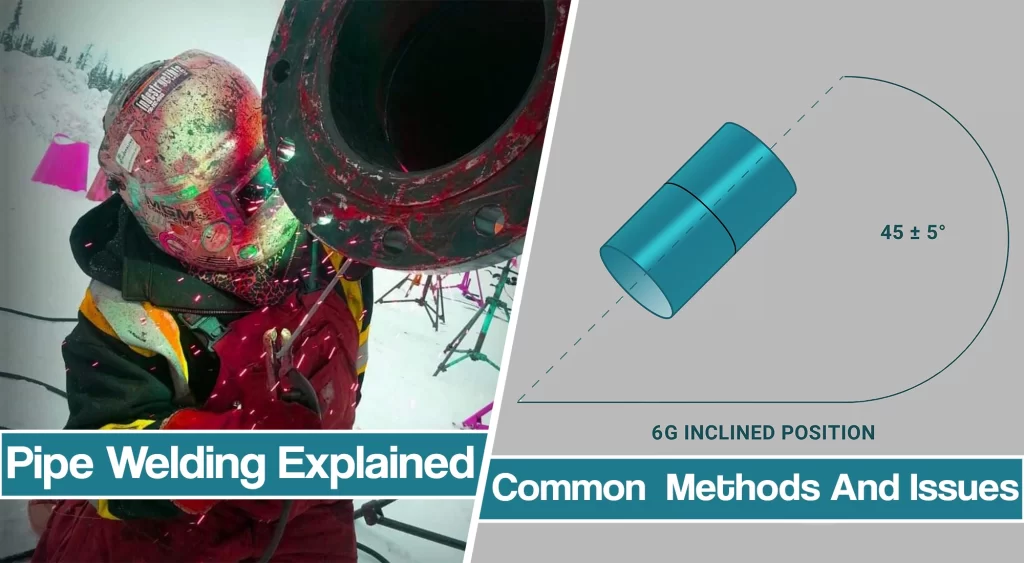
Therefore, we will discuss welding techniques, pipe welding positions, preparation, and responsibilities of pipe welder.
Key Takeaways
- What type of welding is used for pipes?
Pipe welding can be successfully carried out by Stick (SMAW), MIG (GMAW), Flux-cored (FCAW), Submerged Arc (SAW), and TIG (GTAW) welding methods.
- What are 4 pipe welding positions?
Pipes are usually welded in 1G – horizontal, 2G – vertical, 5G – horizontal fixed, and 6G – inclined positions.
- Is pipe welding difficult?
Pipe welding is considered a challenging and hard profession, as pipe welders need high skill, usually work in harsh conditions and join pipes in uncomfortable positions while having to ensure good weld results.
What Is Pipe Welding?
The most straightforward answer is a method used to join two pipes. However, pipe welding goes beyond simple joining, as pipe welders are also responsible for repairing, maintaining, or removing pipes, as well as constructing entire pipeline systems.
Besides welding, pipe welders must also be aware of metal pipe properties and the best ways to do it. That also includes detailed preparation, cleaning, beveling and aligning pipes, and choosing a suitable process and electrodes that match the base metal.
Depending on the specific application, different welding methods are used.
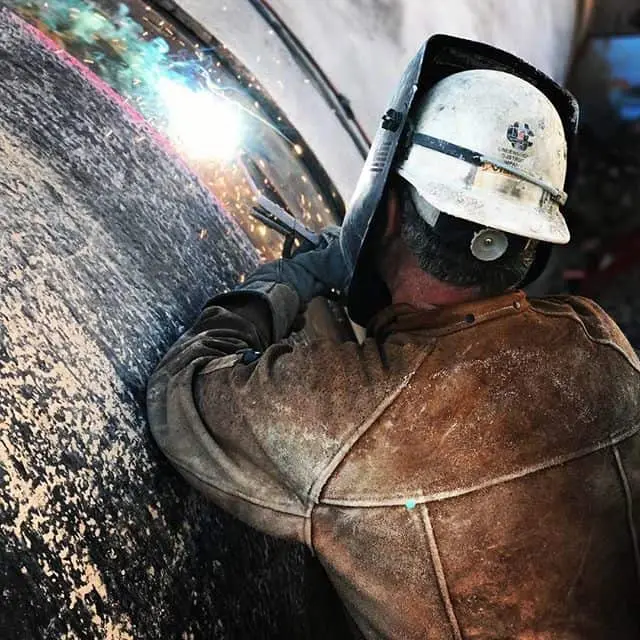
These five are common choices when connecting new pipes or repairing old ones. Pipe fabrication is carried out according to welding standards and welding procedure specifications.
Pipe Welding Techniques And Methods Applied – Quality and cost
As pipe welding is used to join two separate pieces of pipes, pipe welders use one of the common arc welding processes, such as:
- Shielded Metal Arc Welding (SMAW)
- Gas Tungsten Arc Welding (GTAW)
- Gas Metal Arc Welding (GMAW, MIG welding)
- Submerged Arc Welding (SAW)
- Flux-cored Arc Welding (FCAW)
Pipe welders can opt for a different welding process during the welding procedures, and each has its ups and downs. Let’s see what common choices are and their properties.
While for different reasons, such as convenience or budget, pipe welding usually uses a single welding process, combination welding processes can be used. In combo welding, the first pass or commonly known as a root pass, can be done with TIG welding, and then the bevel is filled with SMAW filler weld.
Shielded Metal Arc Welding (Stick welding)
Stick welding is an arc welding process that uses electrodes that are covered by flux, so no external shielding gas is required. As a result, the SMAW welding method can be carried out in the field where most part of pipe welding is carried out, as there are low risks of defects.
Another advantage that makes Stick welding an excellent pipeline welding technique is its portability. Stick welding equipment is cheap and can be easily transported according to pipe welding jobs. All the advantages make SMAW often the go-to choice for pipeline welders.
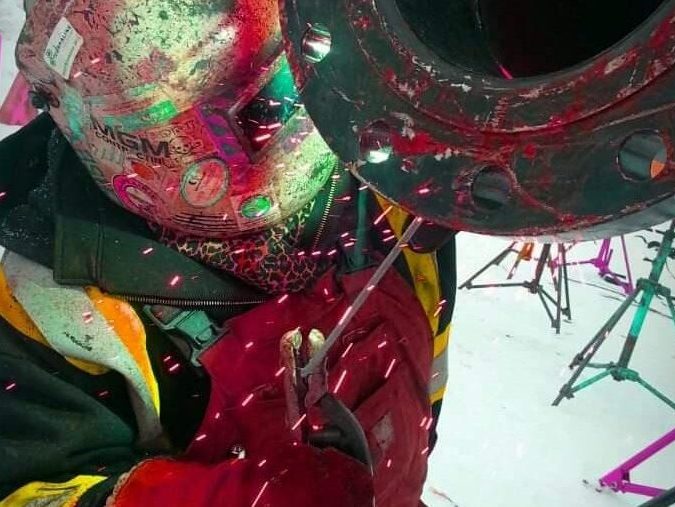
Like any other method, Stick/Arc welding has its drawbacks in pipe welding. With the low travel speed, it can be less productive compared to other welding techniques such as MIG or Flux core. In addition, it cannot be automated.
SMAW pipe welding will require two types of electrodes: an all-position cellulose E-XX10 (E-6010) electrode for root pass and E-7018 for fill and cap pass. These two are fundamentally different types of electrodes.
E-6010 electrode strikes arc easily, and it offers excellent penetration when welding thicker materials. Since they produce slag that easily falls off, they are perfect for tacking and welding thick root passes in pipe welding. 6010 runs only on DCEP, so if there are issues with arc blow, welders can switch to 6011s that work with alternating current.
Meanwhile, E-7018 is a low-hydrogen electrode that provides a smooth arc and ease of use. Due to the low hydrogen content, 7018s produce strong and ductile welds that are the backbone of structural welding. These electrodes are used for fill pass and capping, providing great mechanical strength to the pipe weld, with excellent resistance in harsh conditions and high temperatures.
Gas Metal Arc Welding (MIG Welding)
MIG welding is more productive than SMAW in the pipe business because welders can utilize high wire feed. In addition, the entire process can be easily automated or semi-automated to get even higher productivity. With high deposition, welding pipes with MIG can be cost-efficient.
GMAW requires a shielding gas, so welding in the field or job sites, where most pipe welding jobs are carried out, is not recommended. Wind and draft can easily blow away the shielding, resulting in defects in the weld pool, so MIG is somewhat limited to indoor pipe joining.
Flux Cored Arc Welding (FCAW)
The flux core welding technique combines high depositions and travel speeds of MIG welding with a flux-cored wire that doesn’t require an external shielding gas. As a result, welders can utilize it to join pipes in the field or under outdoor conditions at relatively high speeds.
For even higher deposition and penetration, pipe welding can employ a dual shielded flux core process for fill pass. By introducing shielding gas to special dual shield wire, pipe welders get excellent penetration with high deposition rates, allowing welders to join pipes quicker and fill the joint with ease.
As for the cons, there is an everlasting discussion about the price of the flux cored wire. Yes, the cored wire is initially more expensive than solid wire or stick electrodes. But when doing larger pipeline works, the higher deposition of self-shielded wire can cut labor costs, so the overall expenses are somewhat similar.
Gas Tungsten Arc Welding (TIG)
TIG welding produces high-quality welds with excellent aesthetics, so it is often required in high-precision jobs. Therefore, it is one of the crucial methods when welding thin pipes, or pipes made of delicate and exotic methods. As a result, the integrity and quality of TIG welds can be crucial in certain applications and piping systems.
Keep in mind that TIG welding tools and equipment are expensive. In addition, deposition rates are relatively low, so this method is rarely used to fill the join of thicker pipes, as it is not cost-efficient. But, in specific applications, TIG can be used to weld root passes due to the high quality and cleanliness of the weld.
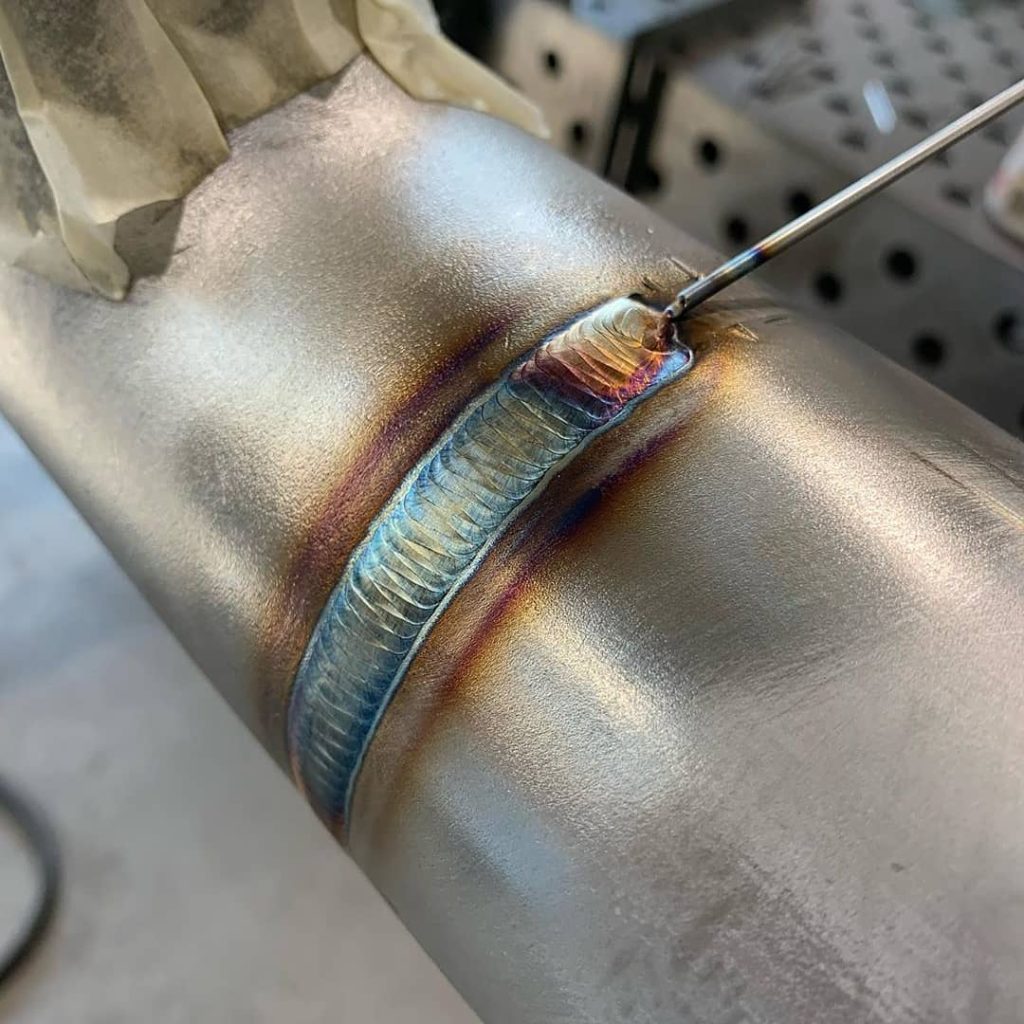
Then, the joint is filled with cheaper and more cost-effective methods such as SMAW and 7018 stick rods that perform well in harsh weather conditions and temperature fluctuations. The Procedure is commonly called combo welding.
Submerged Arc Welding (SAW)
SAW utilizes an arc that is submerged under the blanket of flux, which offers excellent shielding. This is a semi-automated process with medium to the high deposition that offers excellent reliability in pipe welding.
However, since the arc is submerged, the welders cannot control or visually inspect it during the welding. So, when SAW is utilized in pipe joining, weld preparation is crucial. Once the process starts, there is no room for improvements, so pipe welders must carry out adequate preparation with exact weld parameters.
Different Weld passes in Pipe Welding – From Root to the Cap pass
Industrial pipes are usually thick since they are designed to carry natural gas, oil, water, or sewage over great distances. So to join them properly, special weld preparation and procedure are required. Thus, the pipe welder needs to clean and bevel the pipe joints thoroughly.
The beveled joint needs a lot of deposited metal to fill in the cavity, so multi-pass welding is employed. So let’s see what those passes are.
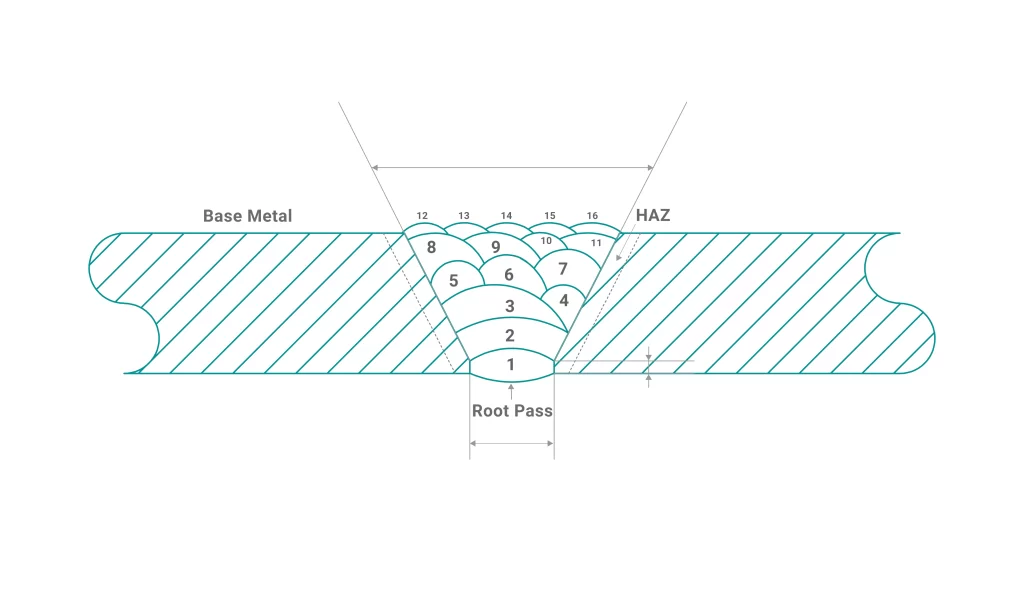
Welding a Root Weld Pass (1)
The root weld pass is often referred to as the initial or starts pass. This is the base and foundation for all subsequent layers, so it must be solid and without any weld defects. Hence, the welder skill must be high enough to ensure good penetration and proper metal fusion, or the entire weld failure might occur.
The root pass is usually done using the SMAW welding method with an E-6010 electrode, but in crucial applications, TIG can be employed. That way, the TIG root weld ensures crucial cleanliness, while Stick filler pass is used due to economics. This procedure is often referred to as combination pipe welding.
Hot Weld Pass (2)
If the pipe welder is not satisfied with the results of the root pass, he can use a hot weld pass to bring some improvements. The hot pass is done immediately after the start pass, usually within 5 minutes after completing the initial weld.
Hot pass, as the name states, is hotter, usually a couple of amps, so it penetrates the start pass and improves the properties.
Filler Weld Pass (3-11)
After the initial and hot pass, the joint is filled with the deposited metal. Filler weld pass is usually done with SMAW with E-7018 electrodes. This is a cost-efficient procedure that ensures that the welded joint is properly filled.
Cap Weld Pass (12-16)
Cap or cover weld pass is the final layer on the pipe welds. The capping can be done by bot stringer or weave beads, and skilled welders can get TIG-like welds aesthetically wise, but that is done with 7018s.
If the pipe weld is subjected to high stress or used in harsh conditions, a skilled welder can apply several final layers or cap passes that reinforce the weld.
Pipeline Welding Positions
Pipe welding can successfully be completed in four different positions: 1G, 2G, 5G, and 6G. The given welding position will vary on the specific applications. Here is a brief explanation of what each of the positions represents and how it affects welding processes.
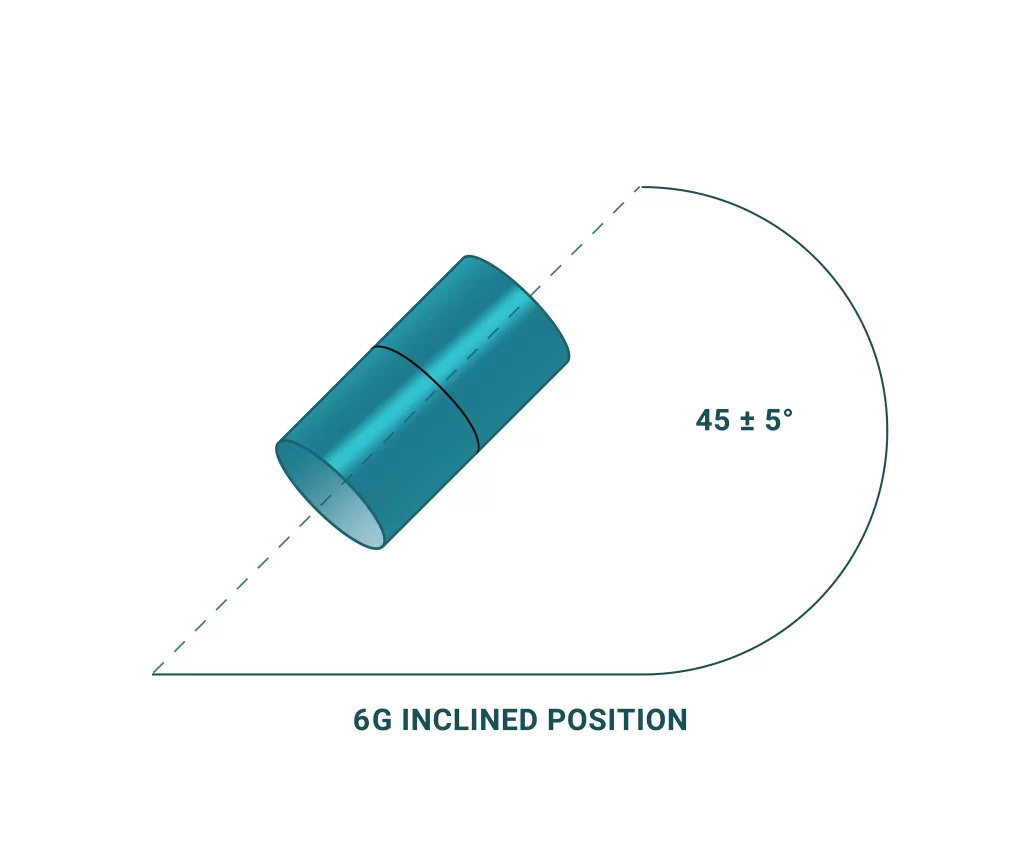
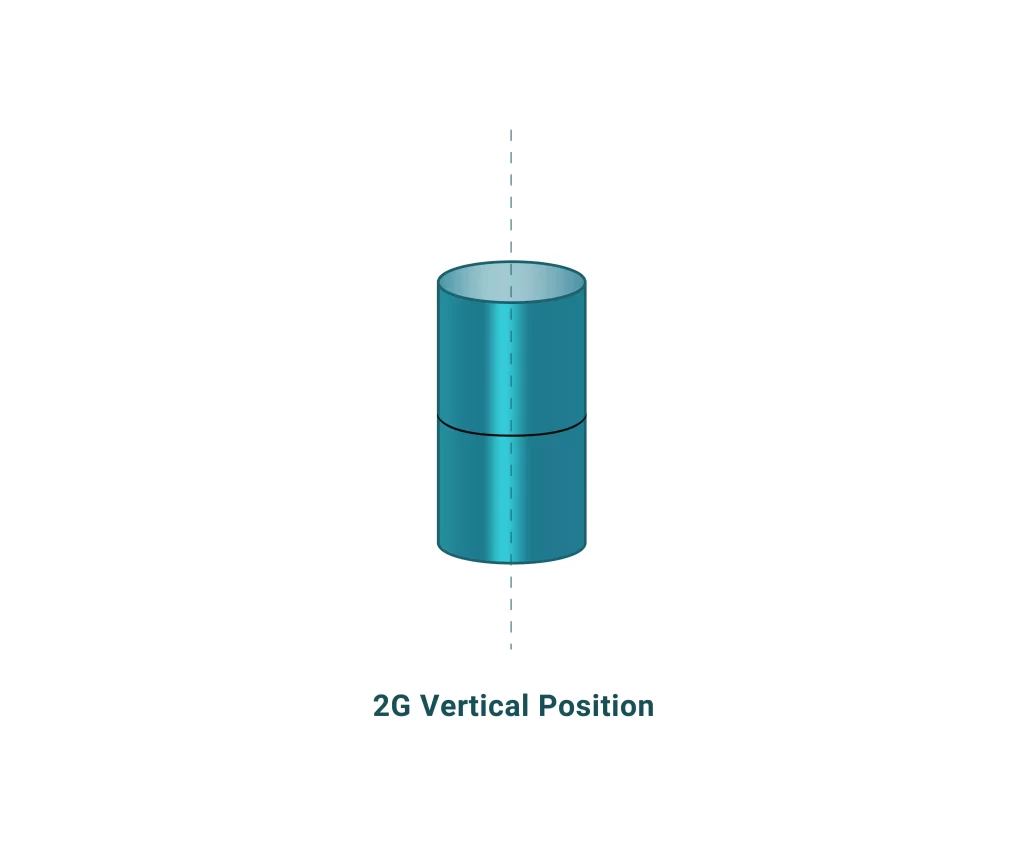
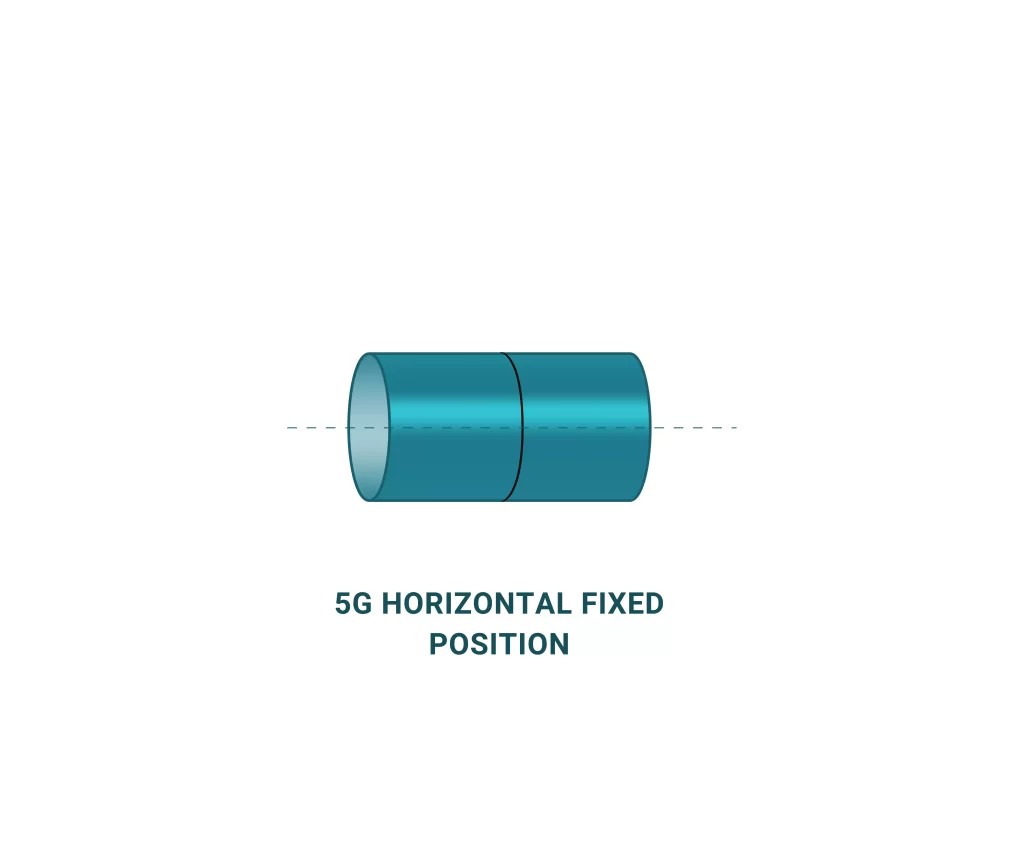
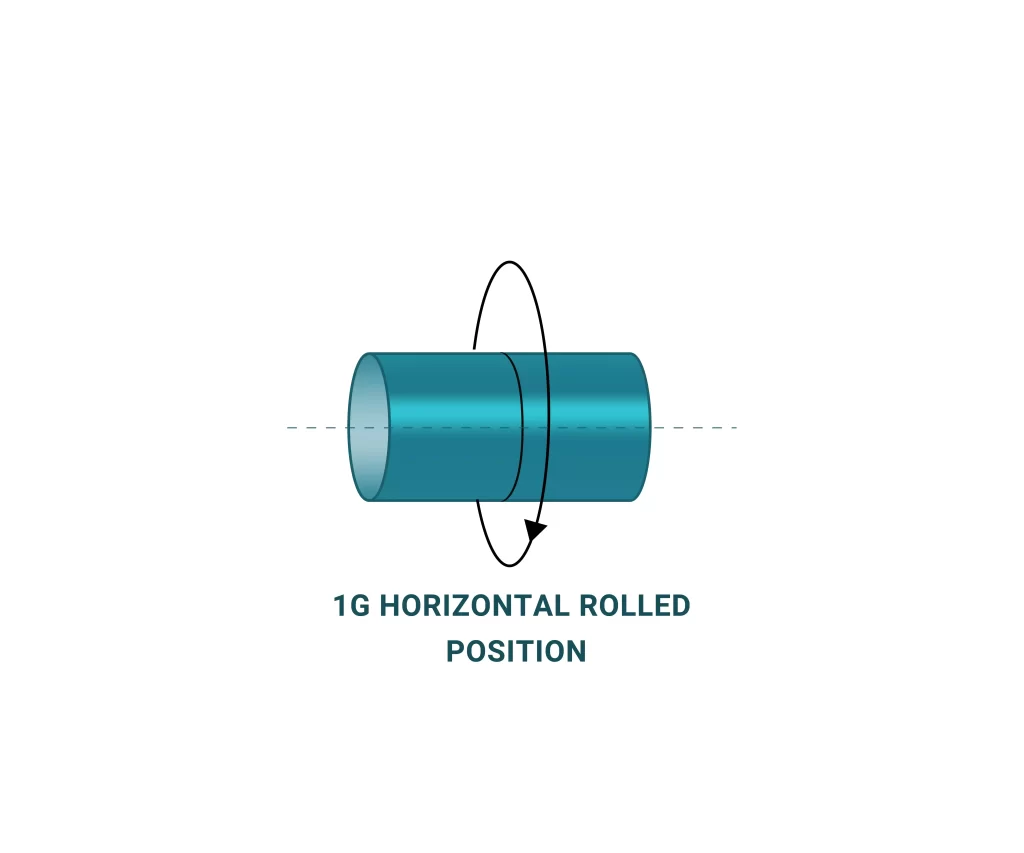
- 1G Position: is the most basic pipeline welding position, as it places the pipe horizontally. The pipe can be rotated around the x-axis while the welder remains stationary. The weld is completed at the top of the pipe, making it easy for welders.
- 2G Position: in 2G pipe welding, the pipe is placed upright vertically. Like with 1G, the pipe can rotate around the y-axis while the welder remains stationary. While the pipe remains vertically, welders perform welding horizontally.
- 5G Position: the 5G welding position is fundamentally the same as 1G, as the pipe is placed horizontally. However, in 5G, the pipe is fixed or stationary. Therefore, the welder must rotate vertically around the pipe to make a weld, making it harder than 1G.
- 6G Position: this is the most advanced welding position, as the pipe is placed incline at a 45-degree angle. Like with the 5G, the pipe is placed in a fixed position, so the pipe welders must work around the pipe, making it extremely difficult.
Common Pipeline Welding Issues
Like any welding procedure, pipe welding carries common issues and problems that make it difficult to perform. That’s why it is essential to ensure proper weld preparation and particular precaution before performing any welding pass.
If proper precautions and welding procedures are not carried out, there is a risk of weld defects. Defects occur due to poor pipe fittings or incorrect preparation and cleaning. Of course, the skill of a pipeline welder is continually accredited.
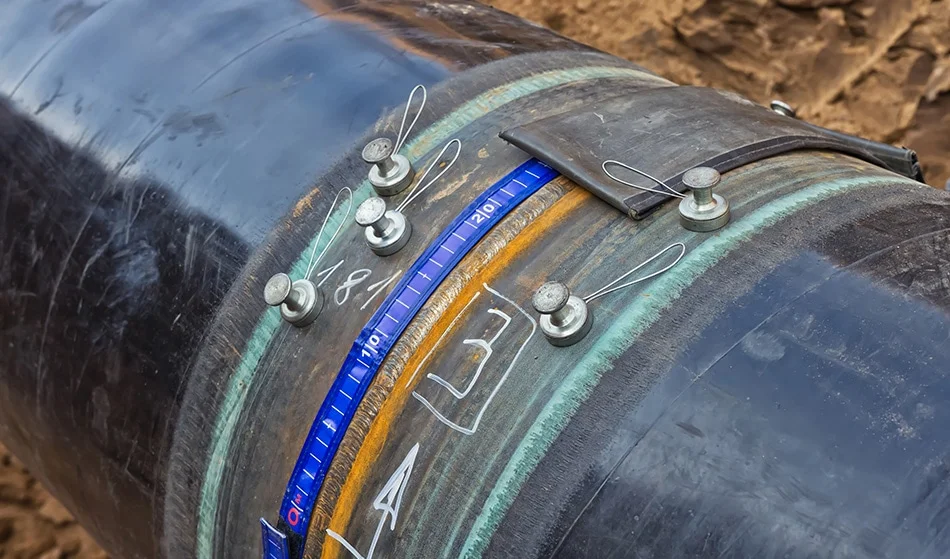
Some common defects are improper fusion, lack of penetration, or discontinuities such as hydrogen inclusion, slag inclusions, or porosity.
Poor fusion and lack of penetration can be caused by poor weld preparation, as the pipes are not aligned, and edges cleaned. Of course, welding parameters must be set straight.
Tungsten, slag, and slag inclusions occur due to poor cleaning after the root pass, while hydrogen gets trapped if the wind blows away the shielding gases in the weld puddle.
Pipe Weld Testing
To make sure there are no defects, weld inspectors carry out testing. While there are different destructive and non-destructive methods, pipe welding usually uses visual inspection, radiographic testing, liquid penetrants, or macro etch, fillet break, or bend test.
If the entire pipe assembly is welded, destructive tests are impractical, so inspectors turn to NDT.
- Visual inspection is one of the quickest and most cost-effective methods, as the inspectors visually check the welds. However, defects are sometimes trapped inside the weld, so further tests are carried out.
- X-ray testing is a common pipe welding test method, where the welds are subjected to radiographic testing. X-rays can find cracks, inclusions, or porosity inside the weld, so even though it is pricier, it is often required.
- Liquid penetrant testing uses special dyes to check for any cracks and leaks in pipes. Penetrant inspection is used in factories to locate extremely fine defects in high-tech welds.
- Magnetic particle testing is used to detect surface and slightly subsurface discontinuities in a weld.
To learn more about it, you can read our dedicated article on weld testing in the oil and gas industry.
Pipe Welding Applications
Welding is one of the most cost-effective methods for connecting metal pipes, from high-pressure and high-purity pipes for food and beverage industries to pipes for oil and gas applications.
As a result, pipe welding found its way into many industries, including transporting natural resources to oil refineries, cross-country or international pipelines, and to mineral processing plants.
Pipe welders are subjected to hard work in chemical processing plants, food and beverage manufacture, and power generation.
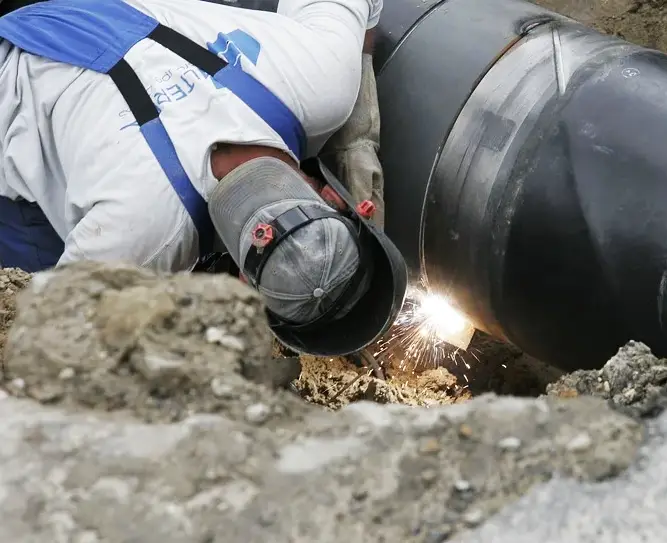
In addition, they connect and create infrastructure for water and gas providers, the construction industry, and many more.
Final Thoughts
Joining pipes has been essential for many industries, and welding is the right method to do it. However, pipeline welders don’t have an easy job.
To achieve the best results, they need to take care of preparing the material properly and choosing the correct shielding gas and equipment. Only one mistake in a single pass can make a difference and cause defects.
Therefore, pipe welding can be challenging as it requires working in harsh conditions, and there is no room for mistakes. So while many welders found themself working in the industry, this job is surely not suitable for everyone.
Resources:
- https://www.twi-global.com/technical-knowledge/faqs/what-is-pipe-welding
- https://www.millerwelds.com/resources/article-library/pipe-welding-techniques-to-avoid-9-common-issues
- https://www.millerwelds.com/-/media/53ac19bdd86d4cc0b040783643bd7d8b.pdf
- https://pces.uk.com/2020/11/24/pipe-welding-techniques-positions-procedures/
- https://www.lincolnelectric.com/assets/global/Products/Consumable_PipelinerConsumables-Pipeliner-PipelinerLH-D90/c2420.pdf





